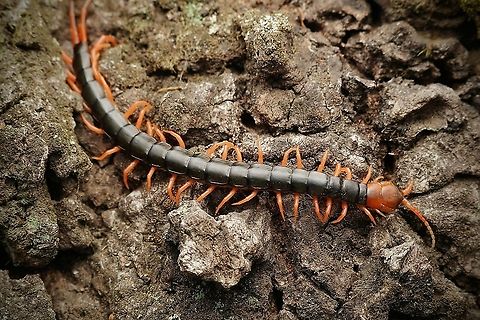
Appearance
Little is known about the venom and the venom apparatus of centipedes. Studies on venom gland described it as the cuticle and epidermis being turned inside out. The venom gland consists of many epithelial secretory units, each with its own excretory system that is shaped like valves. Centipedes of the order scolopendromorph have interspersed radial striated muscles between the secretory units, where one end connects to the lumen of the venom gland and the other end connecting to peripheral muscles. It was suggested that these muscles are used for the contraction and constriction of the gland during venom ejection. The venom gland of scolopendridae is elongated cylindrical in shape with the lumen spanning almost the entire length of the gland. It was suggested the long span of the lumen allows greater control over the secretion of different venom components. The venom glands span along the outer curvature of trochanteroprefemur of each forcipule.Behavior
''Scolopendra subspinipes mutilans'', like other centipedes, are predators who kill by injecting venom into their prey. Venom is injected to immobilize and break down their internal tissues. Venoms of ''Scolopendridae'', including ''Scolopendra subspinipes mutilans'', contain neurotoxins, which are suspected to be a significant fast-acting component in venoms of many centipedes.This species mainly feeds on live animals; plant materials are occasionally consumed but its consumption is considered negligible. To get hold of the prey, these centipedes will grab them with the anterior legs, and typically envenomate their prey by stabbing it using its forcipules.
References:
Some text fragments are auto parsed from Wikipedia.